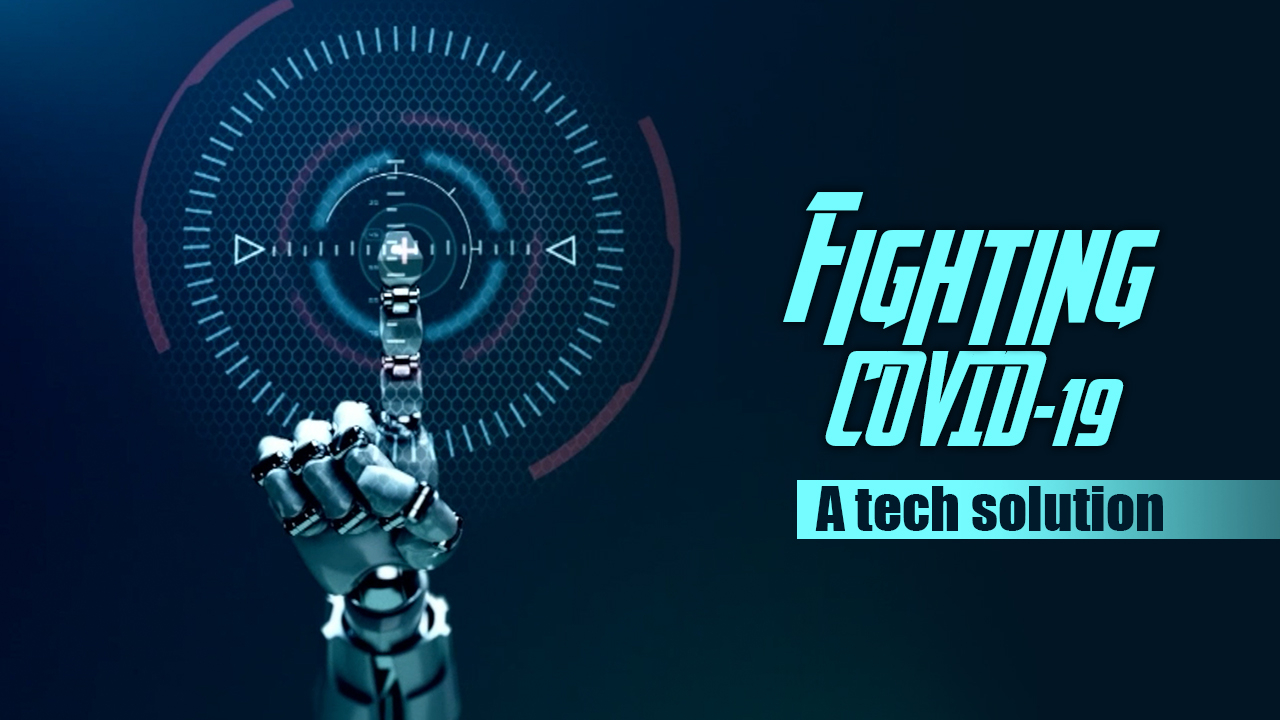06:24

Editor's note: Is 5G spreading the virus? The 5G conspiracy theory that emerged from the UK has been called the "worst kind of fake news." In fact, high tech like 5G, drones, and robots are offering great help in containing COVID-19. This video will take you through how different countries are harnessing the power of technology in the battle against perhaps the worst epidemic in our lifetime.
COVID-19 is a highly contagious and deadly virus.
It's cunning and tricky. Patients can spread the virus even when they have no symptoms.
That's why acting fast is everything when the virus is traveling around the world at an alarming rate. And part of the answer may lie in cutting-edge technology.
It's no secret that hospitals face the same problem in every country: the conflict between an influx of patients and limited capacity.
5G technology offers a solution. With high bandwidth and low latency, 5G makes remote medical treatment a reality.
"Through remote 5G transmissions, we are able to control the CT scanners in remote hospitals, from a far distance, on a real-time basis. We can standardize our checks and the quality of these diagnoses across the board, to prevent unnecessary repeated examinations. More importantly, we can optimize the image quality and doses of radiation released on the patient," said Li Zhenlin, Deputy Director of the Radiology Department at West China Hospital of Sichuan University.

Medical personnel equipped with protective gear when conducting a CT scan. /CGTN
Medical personnel equipped with protective gear when conducting a CT scan. /CGTN
5G is not only gospel for patients desperately waiting for treatment, but also medical personnel.
According to Li, through 5G-aided remote diagnosis, they can reduce the number of high-level senior medical experts in conducting the CT scan, thereby reducing their potential risk of infection.
For a country with a population of 1.4 billion, reducing human-to-human contact is another huge challenge.
But AI solved it. From "chatting" with patients and monitoring public spaces to delivering groceries, food, and medicine, robots have turned out to be a "hardcore weapon."
AI-driven systems are also able to identify high body-temperatures from a stream of moving people. This can help significantly reduce the infection risk in public places.
Cities in China are also employing big data analysis platforms to trace suspected COVID-19 cases.
Shanghai has developed a data platform that combines information from police, health agencies and other governmental departments to track the personnel flow in the city.
Hangzhou is using a personal QR health code to help contain the virus. One can apply for a pass online by filling in some necessary personal information like ID number, contact history with infected people, and health condition. The system will evaluate the information and give a green, yellow, or red pass to the applicant.
Cutting-edge technology is vital in China's anti-virus fight. And if there's one silver lining from the outbreak, it's that the application of new technology is driving new innovations.
Outside China, other countries are taking similar approaches to battle against the virus.
British authorities are working with mobile network O2 to analyze smartphone location data.
The U.S. government is talking to tech companies like Facebook and Google about removing misinformation. This may go so far as to track whether people are keeping at safe distances from one another.
Other countries hit hard by COVID-19 are also exploring tech-use in the anti-virus fight.
In South Korea, a "Self-Quarantine Safety Protection" tracking app was created to monitor the government-mandated quarantine. It is said that if a person steps out of the quarantine zone, the app will send alerts to the individual and the officer on duty.

A woman wearing a face mask has her temperature checked at the Seoul City Church in Seoul, South Korea, April 5, 2020. /AP
A woman wearing a face mask has her temperature checked at the Seoul City Church in Seoul, South Korea, April 5, 2020. /AP
The Israeli Health Ministry is able to send out "tailored text alerts" to citizens about whether they've been in proximity to an infected person.
But there's a catch: the development of AI is powered by the collection of massive amounts of data.
The dark side is the potential danger of violations to privacy and misuse of data.
"This widespread use of surveillance technologies may also encourage the use of the same technologies, the surveillance techniques even after the outbreak for purposes may not be really justifiable," said Huang Yanzhong, senior Fellow at Council of Foreign Relations in an interview with the Wall Street Journal.
Public safety and individual rights – a balancing game that has been even more complicated with technological advancement.
The outbreak is yet another moment at which we must reflect on how much weight we should put on each side.
Should one insist on not wearing a mask for the sake of individual liberty during a public crisis? Or should one sacrifice some personal privacy for the greater good?
As the Internet becomes a way of life, "data" has become central to the government-citizen relationship. These questions will be raised repeatedly in the future. Our answers now might just determine how efficiently we can handle the next public health crisis, and even shape the future human-technology relationship.
Script: Zhao Yuanzhen, Liu Jianxi, and Huang Jiyuan
Video editing and design: Chang Weicheng, Cai Yuesheng, Feng Ran
Voice-over: Bill Neenan
Senior Producer: Bi Jianlu
Managing Director: Mei Yan
Supervisor: Fan Yun
(If you want to contribute and have specific expertise, please contact us at opinions@cgtn.com.)